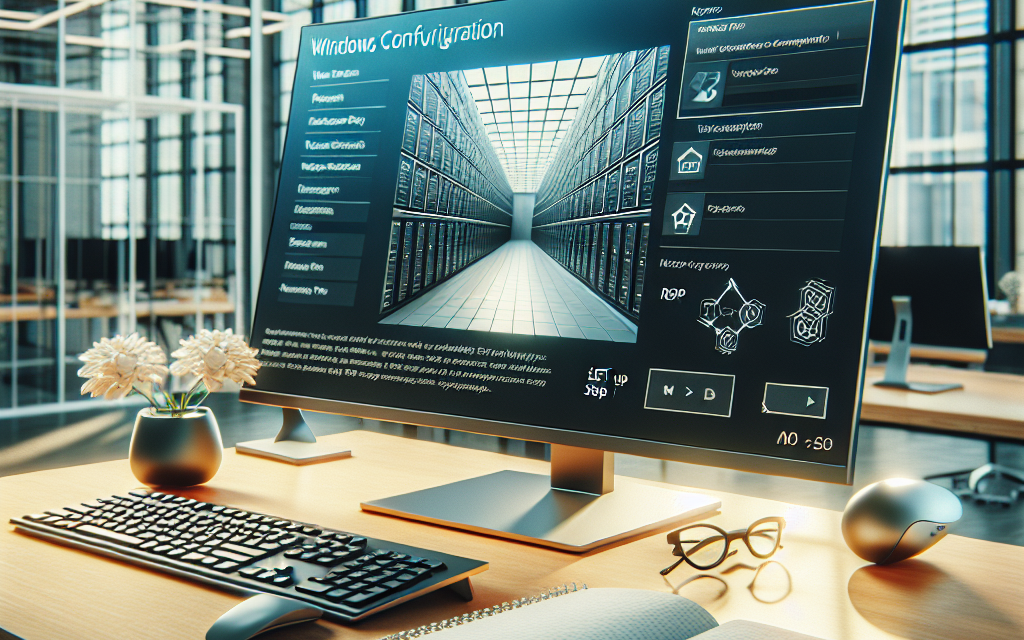Remote Desktop Protocol (RDP) is a powerful tool that allows users to connect to Windows servers and work remotely. However, if not properly secured, it can expose your server to significant security risks. This article provides a comprehensive step-by-step guide on how to securely configure RDP on Windows Server, ensuring that your remote access is safe from potential threats.
Why Secure RDP?
Cybersecurity threats are increasingly common, and RDP is often targeted by attackers due to its vulnerabilities. Insecure RDP configurations can lead to unauthorized access, data breaches, and significant financial loss. By following best practices, organizations can reduce their risk and keep their systems safe.
Step 1: Install and Enable Remote Desktop
1.1. Install Remote Desktop
- Open Server Manager: Click on the Windows Start button and select "Server Manager."
- Add Roles and Features: Navigate to the "Manage" menu and select "Add Roles and Features."
- Role-based or Feature-based Installation: Choose this option and click "Next."
- Select Server: Choose the server you wish to configure for RDP.
- Remote Desktop Services: Under server roles, find and select "Remote Desktop Services." Follow the prompts to complete the installation.
1.2. Enable Remote Desktop
- System Properties:
- Right-click on "This PC" and select "Properties."
- Click on "Remote settings."
- Allow Remote Connections: In the "Remote Desktop" section, select "Allow remote connections to this computer." Ensure that "Network Level Authentication" (NLA) is checked for better security.
Step 2: Limit RDP Access
2.1. Use a VPN
Establishing a Virtual Private Network (VPN) is a great way to add an extra layer of security. Users will need to connect to the VPN before accessing the RDP service, significantly reducing the risk of unauthorized access.
2.2. Configure Firewall Settings
- Windows Firewall:
- Open "Windows Defender Firewall."
- Click on "Advanced settings."
- Create a new inbound rule that only allows RDP connections from specific IP addresses, thereby limiting access.
2.3. Limit User Access
Only allow specific users to access RDP. Use the following steps:
-
Add Users:
- In the "Remote Desktop" section of System Properties, click on "Select Users."
- Add the users or groups that should have remote access.
- Remove Default Access: Ensure the default “Administrators” group is not listed unless absolutely necessary.
Step 3: Configure Security Settings
3.1. Use Strong Passwords
Make sure that all users have strong, complex passwords. Consider implementing password policies that require a mix of letters, numbers, and special characters.
3.2. Enable Account Lockout Policy
To prevent brute-force attacks:
- Open Local Security Policy: Search for “Local Security Policy” in the Start menu.
- Account Policies: Navigate to “Account Policies” > “Account Lockout Policy.”
- Set Policies: Configure settings like "Account Lockout Threshold" and "Reset Account Lockout Counter."
3.3. Audit Logins
Enable auditing to monitor access attempts:
- Open Local Security Policy.
- Navigate to “Local Policies” > “Audit Policy.”
- Enable auditing for "Logon events."
Step 4: Keep Your System Updated
Regularly check for and install security updates and patches. This includes Windows updates, antivirus software, and any other third-party applications.
Step 5: Monitor and Respond
5.1. Use Monitoring Tools
Implement tools that can monitor RDP access and notify you of any suspicious activity. This could include:
- Event Viewer for tracking logon attempts.
- Intrusion Detection Systems (IDS).
5.2. Incident Response Plan
Have an incident response plan ready in case of a security breach. This plan should outline procedures for addressing unauthorized access.
Conclusion
Securing RDP is critical for protecting your Windows Server environment. By implementing these step-by-step guidelines, you can significantly mitigate risks associated with remote access. Always remain vigilant, as cybersecurity is an ongoing effort requiring constant attention and adjustment.
For more insights and updates on cybersecurity, stay connected with WafaTech Blogs!





